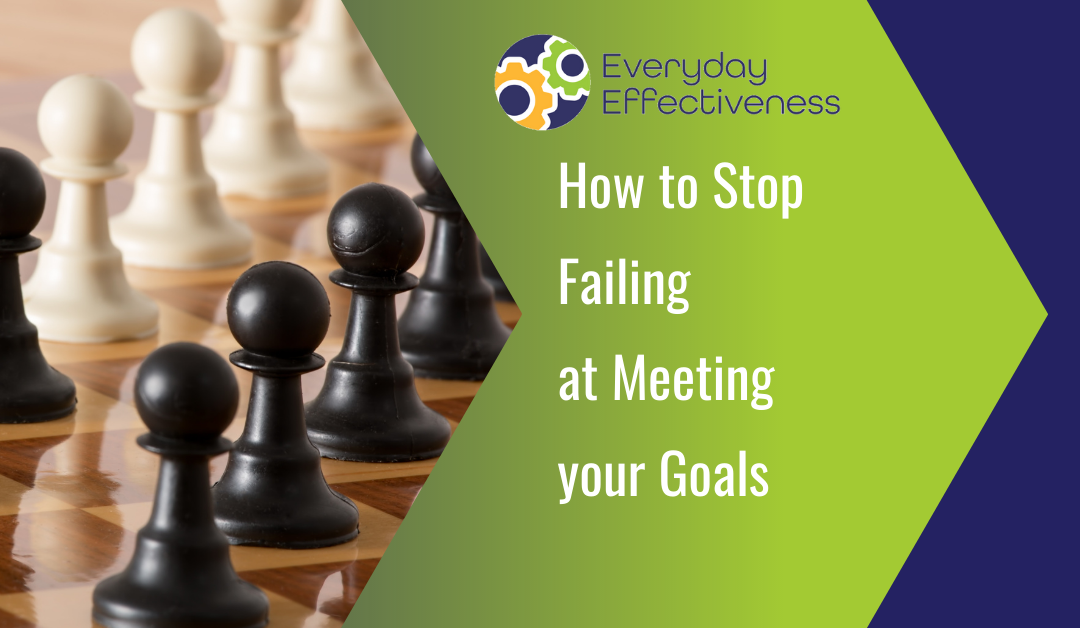
by Gwen Bortner | Operations, Tips & Tricks
There’s a reason we have the term “growing pains” in our collective vocabulary: growth can be painful! In your business, the periods that are the most stressful and overwhelming are usually also the periods where you experience the greatest growth and forward momentum. That’s why it’s even more important to have a clear strategy during those times, so that you can focus on one step at a time, keep your wits about you, and power through the painful period in order to come out victorious on the other side.
Though there are several reasons you might be experiencing growing pains in your business, in my work with entrepreneurs I’ve found that there is some common ground here. If you’ve experienced painful growth in these areas, know that you are not alone! This is an experience shared by almost everyone who has ever tried to run a business.
4 Ways Growth Can be Painful in Your Business
1- Hiring Your Team
When you hire another person in your business, the sense of overwhelm usually comes down to two factors: finances and operations. Whether it’s your first hire or your 15th, expanding your team can absolutely cause some growing pains in these areas.
- Finances: You may never feel like you’re “earning enough” in your business to pay someone else, but when most entrepreneurs get to the point of needing to hire someone else, it’s because they have simply hit a plateau. They cannot earn more money on their own, because they just can’t take on any additional workload. Hiring someone else—and paying them for that work—is often a financial hit at the beginning. Soon, however, you realize that by paying that person to take on some of your workload, you’ve freed yourself up to move to the next income level as a result. This is true of every new hire, so you should expect a little bit of financial strain each time, but it should resolve itself shortly.
- Operations: There’s a learning curve at the beginning of the hiring process every time. The new person needs to learn the steps and skills of their duties, but you also need to learn how to explain those steps and skills to another person. If you’ve been doing the work yourself, chances are you haven’t written out an onboarding process for that, because you just knew what to do all along. Now you’re going to have to invest some time up front to train your new hire; but once you’ve done that, having them take over that work is going to save you significant time in the future.
Hiring a new team member is painful because it requires an up-front investment of time and money, without an immediate return on that investment. However, if you’re playing the long game toward sustainable growth, this investment is absolutely worth it.
2- Unexpected Growth
Sometimes, growth just sneaks up on us out of nowhere. You may find yourself mentioned by a key influencer on social media, or your clients have all decided to refer new business your way at the same time, or perhaps you’ve just gained enough traction that you’re starting to see the natural momentum in your business increase.
Whatever the source of your unexpected growth, it can feel like one day you were just cruising along at ground level, and the next you’re expected to know how to fly at top speeds. It will take some time to reorganize your systems around this growth, and to make a plan for how to address it in the long-term. Having a reliable, repeatable procedure for tackling goals and To Dos is key to riding the waves of unexpected growth in your business.
3- An Influx of Clients
Remember a few months ago, when you were hoping you could round out your client roster a little more fully? Now, all of a sudden, you have more clients than you know how to manage! It can feel like this type of growth comes in surges, and often we don’t realize our maximum capacity for handling client work until we reach that capacity.
If you’re at this point, you have a few different options available to you:
- End your relationship with any clients who are not an ideal fit, in order to make space for new clients who are more aligned with the type of work you want to do or the type of working relationship you want with your clients.
- Hire new contractors or employees to help you manage the workload
- Raise your prices so that you can afford to work with fewer clients; those who aren’t able to retain your services at that price point will naturally fall off, and the ones who remain will allow you to work less but earn the same or more income.
While an unexpected influx of new clients can throw you for a loop at the start, it often provides an opportunity to shift or pivot your business to a point where you are earning more income or doing the type of work that is more in line with your desired workday.
4- A Significant Life Change
You may be a business owner, but you’re also a human being, and that means that occasionally the changes in your personal life are going to affect your business. Some of these life changes may include:
- Divorce, marriage, or new romantic partnership
- Becoming an “empty nester” for the first time
- Having a child
- Retirement for you or your spouse
- Moving or beginning life as a digital nomad
Having a system in place that you follow regularly in your business can mean that you are ready when these life changes arise. You can make a plan to give yourself time to transition through the change, to re-evaluate your goals, and move forward with your new life status and your business.
No matter the scenario, early preparation is the key for navigating unexpected changes in your life and business so that you can reduce the amount of overwhelm you feel in the moment and keep moving forward with a clear plan. If you’d like to be prepared for whatever life and business throw your way, I invite you to join me in my workshop, “3 Strategies to Minimize Overwhelm, Reduce Stress, & Produce Results that Matter.” We’ll work together to set you up with a system that you can follow any time your business gets overwhelming, so that you can get back to work and back on track to reach your goals.
Register now to join me for the workshop, happening September 9th from10:30 AM TO NOON PT.
I look forward to seeing you there!

by Gwen Bortner | Leadership, Tips & Tricks
Do you struggle to make decisions for your life or business, because you never know if you’re making the “right” choice? The truth is, you may never know if you made THE “right choice” at the moment, and chances are there’s more than one option that could be right for you, depending on the circumstances. You don’t get to make two choices at once and test them against one another like a science experiment, so you have to just take a deep breath and choose the option that feels the most right and go forward from there.
Previously, I’ve talked about the biggest obstacles that hold you back from making a decision. Now, I want to give you some tips for narrowing down your choices and getting clear on the most right decision for you and your business, no matter what your options are.
How to Make Better Choices
Take Your Time
Things tend to feel very urgent in the moment. There’s a deadline looming, or you’re caught up in the idea that you’re going to miss some significant opportunity if you don’t figure out all the choices right now. In reality, we often create a false sense of urgency when we’re struggling with a decision, and it’s usually not even necessary. Opportunity does knock twice, no matter what people might tell you, and there is always another train to catch. Give yourself the time and mental space you need to make a decision because rushing through the process usually results in negative outcomes.
Eliminate Emotions
Whether you’re a “Star Trek” fan or not, chances are you’re at least a little familiar with the character Spock, who is from the planet Vulcan. The Vulcans are known for having eliminated their emotional responses to every situation through a rigorous system of meditation and a focus on logic. You may not be able to channel your inner Vulcan, but in many cases, an emotional response may be clouding your vision when making a decision. Take a few minutes to journal about the feelings associated with a decision, and it may bring a lot of clarity on why you’re feeling stuck. You shouldn’t discount your emotions entirely – after all, your “gut feeling” may be leading you in the right direction. However, you also don’t want to make decisions based solely on emotions, because they have the power to affect your judgment. Once you can identify what you’re feeling, it gets easier to separate yourself from that emotion and move forward with a decision that is rooted in logic.
Narrow Your Options
In your school days, if you had to take a multiple-choice test, the best strategy was to start by eliminating some of your options. Usually, those types of tests had at least one answer choice that was obviously wrong, if you just took the time to evaluate it. The same strategy can be applied to your decision-making; if you narrow down your options, you can make an easier decision based on what’s left over after you’ve eliminated the choices that are obviously wrong for you and your business.
If you’ve given yourself time and space, you’ve identified your feelings and balanced them with logic, and you’ve narrowed down your options, you can then make a decision knowing that you have thought through your options completely.
As an entrepreneur, you face many choices in all areas of your business every day. Sometimes it’s not clear which part of your business you should start with. Take the GEARS Assessment today to help you identify which area needs your attention before the others.

by Gwen Bortner | Office Productivity, Tasks & Goals, Tips & Tricks
Setting goals is great – it feels so good to think about the future and make plans for the greatness you will achieve in the coming year. The hard part comes when you start looking back at the goals you set, and you realize you haven’t met any of them. Stop letting yourself down – learn how to actually MEET the goals you set so that you don’t have to feel like a failure any more!
Here are my best tips for achieving the goals you set for yourself, whether they’re for life or business or both!
Tip #1: Understand whether or not this goal REALLY matters to you.
Often when we fail to reach a goal, it’s because we gave them lip service but weren’t truly inspired to reach them. We thought we should set the goal but as it turns out, we don’t want to actually work with it. So the first step is to eliminate all the goals that don’t actually matter. Though this may *feel* a bit like failing at those goals, in reality it’s more like de-cluttering your goal list so you can focus on working towards the things that matter most.
Tip #2: Keep your goal count low.
When you set too many goals at once, you’re focusing on too many things and you don’t get any progress made. Even if you have several goals in mind, choose just a few to focus on at any one time so that you can make real progress. It’s better to check off your goals one at a time because you can use that progress to motivate you to work toward the next goal, rather than pushing yourself to work on too many projects at once and feeling like you’re never going to finish anything.
Tip #3: Partner with someone who has similar goals.
This type of relationship is called an accountability partner, and it can be really helpful to work together with someone who has similar goals to your own. The concept is most familiar in the form of a workout buddy but it can be applied to any goal. The key is to work toward supporting one another and not turn it into a competition.
Tip #4: Work with someone who can help to push you toward reaching your goal.
Instead of an accountability partner (someone who has a similar goal), this tip is more about finding an outside person to motivate you to work on your goal. It might be a partner or friend or it could be someone like a business consultant or coach.
Tip #5: Set 3-Level Goals.
Todd Herman suggests you should give yourself goals at 3 levels: good, better, best. For instance: the best-case scenario is that you want to lose 50 pounds, but good would be 10 and better is 25. If you ONLY set the highest-level goal then it often takes too long to reach it and it’s easy to get discouraged. But when you reach the good or better goal then that can even be what motivates you to push to the next level.
Tip #6: Look for the WOW Mindset.
Instead of looking at how far you have to go, you look at how far you have already come. Instead of, “I’ve still got 9lbs to lose,” think of it like, “WOW, I lost a pound already!” Looking at your goals from the mindset of the progress you’ve made rather than what’s left to do is a way to encourage yourself to keep making that progress. (This is another of Todd Herman’s great ideas!)
Tip #7: Avoid the OW Mindset.
Herman’s final contribution to this post is the “OW Mindset,” or the idea that all too often we focus on what’s left to come instead of on how far we have already climbed. This tip is the companion to the last one; avoid thinking of the “pain” of what’s to come and instead focus on the success of what you’ve already achieved.
Tip #8: Recommit to your goals on a regular basis.
Review your progress, make adjustments as needed, and keep moving forward. This is the foundation of making actual progress – the process of checking up on the progress you’ve made and reminding yourself why you wanted to achieve that goal in the first place.
Sometimes, reaching the truly important goals requires more motivation and resources than you can drum up all by yourself.
If you’d like some help reaching your goals for 2022, I’m offering a free workshop where I’ll be teaching my 3 best strategies for reducing overwhelm and meeting your goals. Click here to sign up!

by Gwen Bortner | Leadership, Tips & Tricks
In my last post, I outlined the biggest obstacles we face when we have to make a tough decision (click here if you haven’t read that one yet). This is also a follow-up to the piece I wrote for APeeling Magazine; if you’d like to read the original piece, click here.
Knowing what’s holding you back from making a big decision is half the battle – but it’s only the first half. It helps to give you clarity and insight, and to move past any emotional or tangible roadblocks you may be facing. Now that you know what’s holding you back, your next task is to actually make the decision, and that’s where it can be tricky.
Today, I’m sharing my top strategies for making decisions when there isn’t a clearly “right” answer. I have used these strategies to set business goals, make decisions that would move my company forward, and even to make challenging personal decisions. Maybe one of these strategies will help you in a similar situation – make sure to bookmark this page so you can come back to it when you’ve got to make a big decision.
Strategies to Help You Make Better Decisions
The Stair-Step Method
This one is for a decision where there are multiple options, and you’re not sure how to choose between so many possibilities. For this strategy, make a list of your options and number them in order. The trick is, instead of trying to look at every possibility all together, you’re going to narrow it down one pair at a time. Look only at choice #1 and choice #2. Pick the best option JUST between those two. Now, put the winner of that contest up against choice #3, and pick the best option only between those two. Repeat this process until you reach the bottom of your list. The winner of the final 1-on-1 contest is the choice you’re going to pick. (Note: you don’t go back through the list and pair them up differently a second time; you get to the bottom and that’s it. Like a sports bracket, there’s one clear winner, and the match-ups don’t get shuffled around after the final game.)
Beyond the Pros and Cons
Chances are, if you’ve been stuck on a decision for any length of time, you’ve probably already tried making a pro/con list, and you still don’t have enough clarity to make the decision. If you’re trying to make a “yes or no” decision, try this strategy instead, which is a twist on the classic pro vs. con list. Divide your paper into four sections and label them like so: pro/want, pro/need, con/want, and con/need. Now, you still brainstorm a list of pros and cons, but you associate each one with something you want or something you need. This can be especially helpful if you’re making a decision that involves doing something difficult that you don’t really want to do, but you know it will move you forward. Breaking the pros and cons up into four different categories can give you clarity on the strongest options between them, and can also help you see if you’re holding yourself back from a decision because it isn’t really what you want to do.
Short vs. Long Term
Use this strategy when you’re choosing between two options that have a lot in common. The similarity between them is likely what’s holding you back from picking one in the first place, so this strategy can really help with that. For each option, make a list of short-term wins and long-term wins if you were to choose that option. When you compare them side-by-side, it can be easier to see the overall benefit of each choice. Do you really need a short-term win in order to get over an immediate hurdle, or will your business benefit overall if you play the long game and wait for a win that takes more time? As you’re evaluating the options, ask yourself: will you be glad you made this choice in 3 months, 6 months, a year? The phrase I use is: Will Tomorrow Me thank Today Me for this decision? This can help you really weigh the options and make the best choice.
If you’re still struggling, you may be putting far too much emphasis on one single decision. In almost every situation, you will have an opportunity to choose differently at some point in the future. There will likely be a cost – of time, money, or opportunity – but there will be a time when you can reverse a decision or take a different path. It’s very rare that a decision is both life-changing AND permanent, but sometimes it can feel that way in the moment.
If you struggle with making decisions, adding these strategies to your toolkit should help you make confident choices to move your business forward. If you still need some help, sometimes the best thing you can do is bring in an outside perspective; someone else who isn’t emotionally attached to the outcome of your decision can bring clarity to the situation that you may not be able to find on your own. If you’d like some help with your decision-making, click here to book a 1-on-1 coaching session with me. Let’s tackle this problem together!

by Site Admin | Show Your Work, Tips & Tricks
Some of you may have “met” my assistant, Jess, on this blog before. Today she’s here to talk about her new role in my company: Content Creator. If I’ve convinced you this month that it’s time to up your content game, Jess will show you one option for making that happen!
Hi everyone! I’m Jess, and I work for Gwen and a handful of other creative business owners to create the content that serves their audience. Today I get to take over Gwen’s blog and explain how that works, and how YOU can leverage the power of a Content Creator for your business.
What
A content creator is exactly what it sounds like – it’s my job to create content: blog posts, e-mail newsletter, website pages, ebooks and online class materials. I have a background in this area: once upon a time I was a high school English teacher and a freelance writer, and I have degrees in English and Education. So it’s in my blood to write the content pieces that educate, inform, and (I hope) empower Gwen’s audience members; this is the stuff that makes me geek out.
Why
Gwen is busy. She runs a business that involves traveling to teach, serving her customers through 1-on-1 consulting sessions, and creating products and services that will help small business owners grow their confidence and their businesses in order to achieve the type of success they most want for themselves. Like most small business owners, she simply can’t wear ALL the hats in her business – her growth would be limited if she tried to do that. So she hired me to help her create the content to engage her audience, so that she can spend her time on tasks that really require her specific expertise and personal touch.
On my side of things, I do this job because I believe that there are small business owners out there (Gwen included!) who have something really awesome to share with the world, and I want to help them spread that awesomeness around. It’s my privilege to craft the stories they want to tell.
How
The “how” piece is slightly different for all of my content clients, based on their needs and the needs of their audience members. In Gwen’s business, this is how it works:
Gwen is an extrovert – she loves to talk, and she needs to process her ideas out loud. That’s why it can be difficult for her to express herself in writing, because there’s no direct interaction with another human being in that process, and it’s from those direct interactions that she draws her energy. (If you’ve ever had a consulting session with Gwen or met her at an event, you know what I’m talking about: her energy is infectious!)
Blog Posts & Emails
In order to feed on this energy, Gwen and I chat via Skype a couple of times a month. During one of those sessions we’ll lay out the plan for her blog posts and e-mail newsletters for the upcoming month. Gwen will explain what she wants to cover in those pieces, and I’ll furiously type notes while she talks. Then I take those notes and I polish them up and turn them into the blog post format you’re reading right now.
Educational Content
We have a similar process for the study guide content for the Small Biz Book Club – I send Gwen an email each month asking her about the study guide we’re preparing (this happens several months in advance of when we actually read the book with the club members). I ask her to break the book into weekly segments, to lay out for me the most important points she wants to be sure to cover, and to list the questions she wants to ask the group members. Then I pick up my copy of the book and, using Gwen’s notes as a guide, I flesh out the study guide content for that book. Our other team member, Holly, reads it for any errors in grammar or clarity, and then Gwen reviews it for a final polish before it goes live to club members.
Gwen and I have timed it, and because of my background in writing, education, and curriculum, it takes me a LOT less time to write her blog posts than it would take her (about 20% of the time, actually!). So even though she’s paying me to do this part of the job, she’s actually saving money in terms of the time spent on the tasks, and freeing herself up to do the work that brings in even more income, like consulting and training.
Who
Hiring a content producer isn’t necessarily the best decision for every small business owner – if your business IS content creation, then maybe you don’t need someone else to do this for you. However, if your business is anything else, then you can free up valuable time and improve the quality of the content you produce if you invest in hiring help with your content. Whether you just want someone to come in one time and polish up your website content, or you want ongoing support to regularly craft emails and blog posts – that type of help is available!
If you struggle to create content that truly serves your customers and tells the story of your business the way you want it to be told, maybe it’s time to get some help! Click here to visit my website for more information.
And if you’d prefer a DIY solution, you’ll find loads of great information on content in Epic Content Marketing, our Small Biz Book Club pick for June! Enter your information below to read along with us:

by Gwen Bortner | Tips & Tricks
Have you ever read an article or listened to a presentation and thought – Well, that’s 20 minutes of my life I’ll never get back! Is your audience thinking the same thing about the content you create?
If you’ve ever written an important paper for a school assignment (no matter – ahem – how long ago that might have been!) then you know: it takes research, planning, and time to create something of quality – something that deserves an A+. So… how much time are you putting into the content you create for your business (blog posts, sales pages, newsletters, and more)?
Your audience is inundated with content every single day. If the content you produce isn’t A+ quality, they’re not going to stick around to finish it.
Here are some ways you can improve your content to make it worthy of the people you’re trying to reach:
Share your Wisdom
Just like in school, it’s time to hit the books! Read articles, books, and blog posts on your topic. Educate yourself, and then pass that knowledge along to your audience members. A well-informed audience is more likely to make the decision to buy what you’re selling down the road, so invest the time now to educate them!
Teach a Skill
A type of content that’s usually guaranteed to get good results is the one that teaches a valuable skill. Think about what your audience members would typically type into a search engine, and then write an article or film a tutorial that walks them through the process of learning that skill!
Explain the Why
Last week I reminded you that you can’t sell a solution without first getting your customer to understand that she has a problem. The content you create is a great place to explain to someone WHY they might need the products you sell – to guide them toward an understanding of the problems they face, even if they don’t know it yet.
Assess the Value
How much is your content worth? If you were offered the chance to pay for the information or skills you’re sharing, would you spend money on it? If not, then it’s not very valuable even if it’s free! If you seek to always create content that’s worth paying for, then your customers will feel like they’ve gotten so many freebies from you already that they’re happy to pay you for the “next level” content you want to sell. They will believe in the value of your gated-entry paid products and services because they’ve experienced that value first-hand in your free content.
Pro Tip: The value in your content should be for your audience, not yourself! YOU are most likely NOT a member of your own target demographic. (A classic example: if you sell handmade quilts, the value of the quilt should be the price a non-quilter is willing to pay for the skill that went into it! It’s not the value as perceived by someone who could make their own quilt.)
Listen and Serve
When you give someone a gift they don’t like, you can see the disappointment on their faces. The reverse is also true: when you’ve done your research and purchased that perfect item someone will love, they light up when they receive it. Your content is no different – it should be a gift that you hand-selected for your audience, based on their needs, desires, and pain points. Make it a point to listen to your customers, and always deliver content that solves the problems they’re having in the moment.
If you’re not regularly taking the time to create high-quality content that serves your audience and brings in new business, why are you wasting any time or money creating it in the first place?
If you know your content is lacking and you’re ready to do something about it, join us in June as we read Epic Content Marketing with the Small Biz Book Club! We’ll learn how to create high-quality content that serves our readers and helps them see the value in what we have to offer the world. Enter your information in the form below to join us for the book club:








